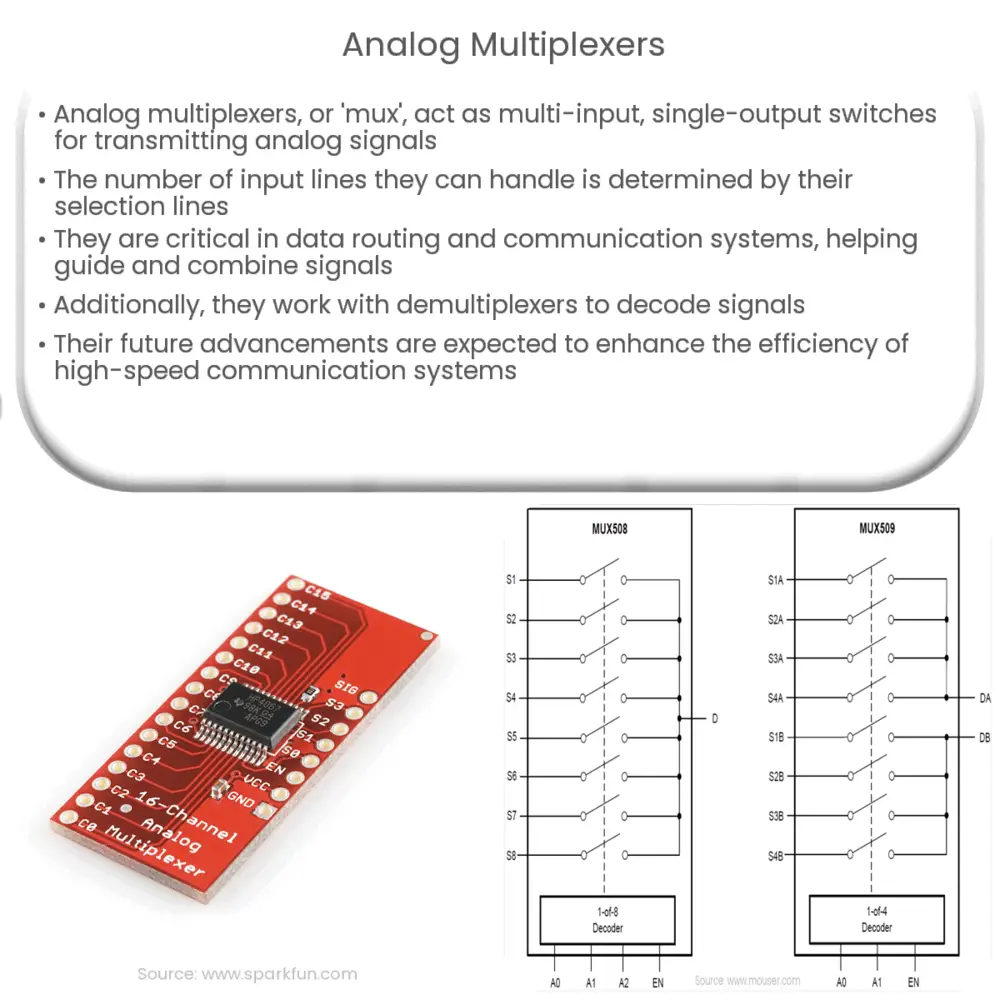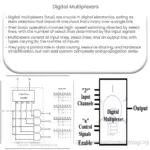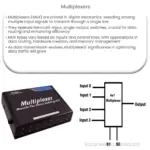Explore the world of analog multiplexers: understand their types, functioning, applications, and their crucial role in modern electronics.

An Overview of Analog Multiplexers
Analog multiplexers, often referred to as ‘mux’ or ‘multiplexers’, are essential devices in the field of electronics that aid in the transmission of analog signals. Essentially, they function as multiple-input, single-output switches that can streamline the transmission process.
Multiplexers operate based on a certain number of selection lines. The number of channels that can be multiplexed or the number of input lines depends on these selection lines. For example, a multiplexer with 3 selection lines can have 23, i.e., 8 input lines.
Types of Multiplexers
- 2-to-1 Multiplexer: This type of multiplexer has 2 input lines, a single output line, and 1 selection line.
- 4-to-1 Multiplexer: This multiplexer category has 4 input lines, 1 output line, and 2 selection lines.
- 8-to-1 Multiplexer: Here, 8 input lines, 1 output line, and 3 selection lines are present.
- 16-to-1 Multiplexer: As the name suggests, this multiplexer comprises 16 input lines, 1 output line, and 4 selection lines.
Functioning of Analog Multiplexers
Analog multiplexers select a specific input line based on the binary code provided to the selection lines. The selected input line is then connected to a single output line. This process is often visualized as a multi-way switch. Importantly, the transmission or switch happens fast enough to maintain the integrity of the analog signals.
Applications of Analog Multiplexers
- Data Routing: Multiplexers play a crucial role in data routing. They help guide different data inputs to specific outputs, enabling efficient data transfer.
- Communication Systems: In communication systems, multiplexers help combine signals from different sources for transmission over a single line.
These are just a few of the numerous applications of analog multiplexers, emphasizing their importance in modern-day electronic systems.
To fully grasp the potential and working of these multiplexers, it’s essential to delve into their architecture, including the unique role of demultiplexers in tandem with multiplexers. Furthermore, understanding the vital role of these devices in various fields such as telecommunications, computing, and data acquisition systems is paramount.
Analog Multiplexers: The Architecture and Role of Demultiplexers
Analog multiplexers, in addition to selecting and routing signals, can also function as decoders when used alongside demultiplexers. A demultiplexer, also known as a ‘demux’, is essentially the reverse of a multiplexer. It takes a single input line and distributes it over several output lines, with the exact output line selected by a binary number. In essence, a demultiplexer interprets the output of the multiplexer. It helps segregate the combined signals at the receiver’s end, ensuring that the intended signal reaches the correct destination.
Applications: Beyond the Basics
- Computing: In the realm of computing, multiplexers are used in the design of processors. They help in switching the data flow within the processor, thereby enabling efficient use of resources.
- Data Acquisition Systems: Multiplexers also find application in data acquisition systems where they aid in reducing the number of data acquisition channels, consequently reducing system complexity and cost.
- Telecommunications: In telecommunications, multiplexers are extensively used to allow multiple data streams to travel via one communication medium, thereby optimizing bandwidth utilization.
Future Prospects
With the exponential growth in the realm of electronics and digital communication, the future of analog multiplexers is promising. Innovations in this field aim to make these devices faster, more efficient, and compact, meeting the requirements of modern high-speed communication systems. Furthermore, the evolution of multiplexers with integrated features, such as built-in amplifiers, is anticipated to revolutionize the way these devices function.
Conclusion
In conclusion, analog multiplexers play a pivotal role in the efficient and effective transmission of signals in numerous electronics and communication systems. Their ability to reduce the complexity of systems while optimizing data transmission makes them an integral part of modern digital infrastructure. With continual advancements and innovations, these devices will continue to shape the future of communication, computing, and data acquisition systems, making our lives more interconnected than ever before.




